7 Jul 2024 |
By - Sudha Mariappan
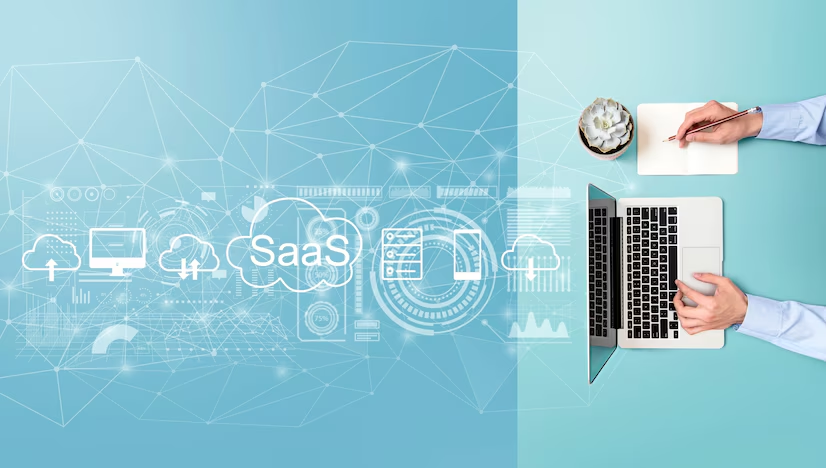
Businesses are rapidly adopting the SaaS model where software is made accessible online. They don't require local installation anymore.
This offers the flexibility of scalable solutions to consumers, reducing Initial costs and subsequent management.
However, strategy is crucial for attracting potential customers. With the competition in the SaaS business all around, a proper strategy will help you convert and retain customers.
For any SaaS business to succeed, it needs to understand the customers' journey and guide them through a process that brings them to an awareness, trust, and loyalty point.
This is where the B2B marketing funnel becomes essential.
Let's see how you can generate revenue using a B2B sales funnel, to market your SaaS products.
What is a B2B SaaS marketing funnel:
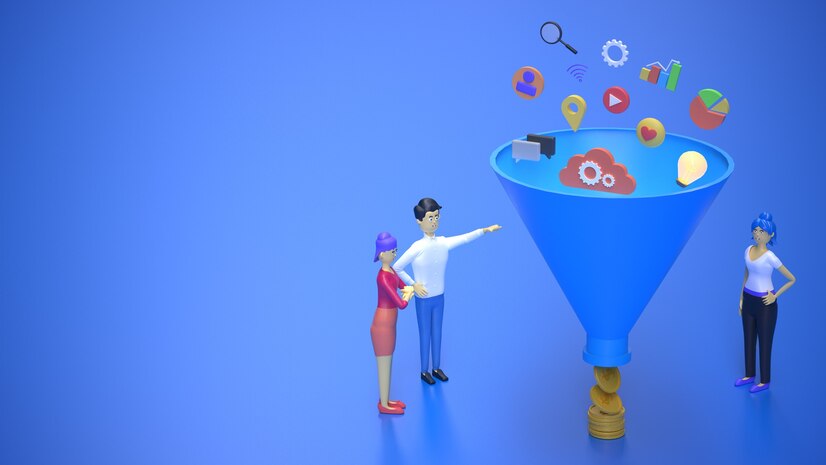
Companies have managed to deliver software and services without requiring customers to purchase, install, or maintain even a single thing on their computers.
This is where the term SaaS comes in. The simple definition for SaaS is software being provided on the internet (the "cloud") to the customers on a subscription basis.
These services can now be found by the user on his or her internet browser, putting an end to the worries regarding installation, updating, and maintenance.
Some of the popular SaaS products include Google Drive, Salesforce, and Slack. These software provide services to streamline business functions like communication, file sharing, and customer relationship management.
Now, to successfully sell such services, corporations require a systematic approach in order to connect with the targeted customers—this is where the B2B marketing funnel comes into play.
For example, a customer journey is like making a big purchase, such as buying a car. You start by learning about different options (awareness), then narrow down your choices based on features, prices, and reviews (consideration), and finally, you decide which car to buy (decision).
In the same way, when businesses sell software to other businesses, they guide potential customers through a similar process of awareness, engagement, and conversion.
The B2B marketing funnel helps companies understand the path their customers take from an initial interest to the final purchase.
This will also allow businesses to customize the marketing activities of each stage, whether it is attracting new leads, nurturing information flows, or convincing them to make a final purchase.
Focusing on the right messaging and offer at the right time enhances SaaS companies' chances of conversion.
Two important concepts relate to each other: SaaS and the B2B marketing funnel. Understanding how to guide the prospect from first hearing about a service to buying that service is crucial for a SaaS company.
The appropriate strategies at every stage of the funnel will not only increase the reach but also build solid relations with customers to convert them into long-term clients.
This approach is of prime importance for SaaS businesses because it helps them continue to grow while reducing churn rate and increasing overall customer satisfaction.
Read Also: Free Guide to generate leads for your B2B Business
Ideal Customer Profile:
An Ideal Customer Profile is a description of the perfect customer who benefits most from your product and generates the most value for your business. For B2B SaaS, this would include firmographic details like industry, company size, and revenue. Also, technographic details such as current tools used, and behavioral traits such as purchase intent and challenges faced.
To create an ICP, analyze your top-performing customers. For example, if your SaaS product optimizes team collaboration, your ICP might target companies with remote workforces needing scalable tools. Platforms like LinkedIn and industry databases can refine these criteria.
A strong ICP ensures marketing and sales efforts focus on high-potential leads, saving resources while maximizing conversion rates. Customizing content and campaigns to fit this profile helps in crafting an effective funnel that resonates with your audience.
Understanding Your Customers' Journey:
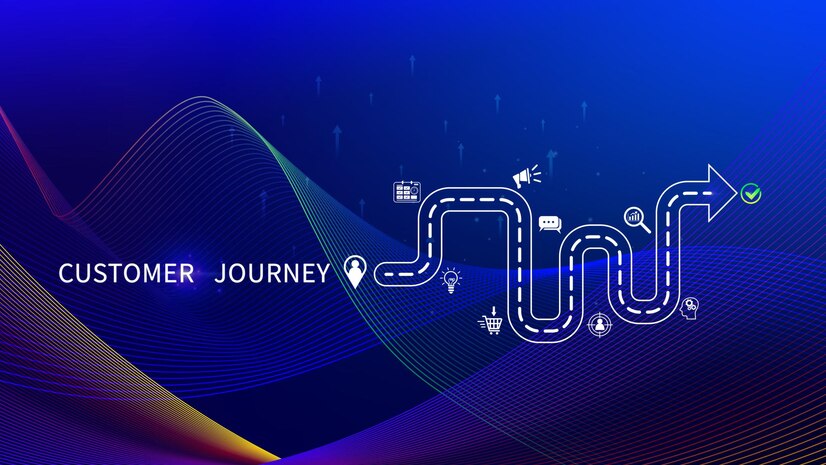
A clear understanding of the customer's journey is a key element for a successful funnel. The B2B SaaS journey is usually multifaceted, with involvement from several stakeholders and a longer decision-making period.
It can be segmented into four stages:
-
Awareness: Customers get to learn about your product through blogs, social media, or ads. The content here is meant to educate and grab attention.
-
Interest: This is where the target audience, who can turn into future customers, get interested in your product. They will now check out your blogs, social media posts, and get to know more about your product.
-
Consideration: Leads assess your solution using case studies, webinars, or even a demo of the product. Personalization generates trust during this step.
-
Decision: There are detailed analyses that happen at this step. Include a calculator for return on investment, testimonials, and even free trials to reduce decision-makers' anxieties.
Read Also: Sales 101: Understanding the Sales Process and the Sales Funnel
Designing Your B2B SaaS Marketing Funnel:
A properly constructed B2B SaaS marketing funnel would take leads all through the process, from creating awareness to conversion and retention.
Breaking up the funnel into Top-of-Funnel, Middle-of-Funnel, and Bottom-of-Funnel is a step closer to developing more targeted lead-nurture tactics that will guide leads along a path to eventual purchase.
Here's how to make each stage optimized:
Top-of-Funnel:
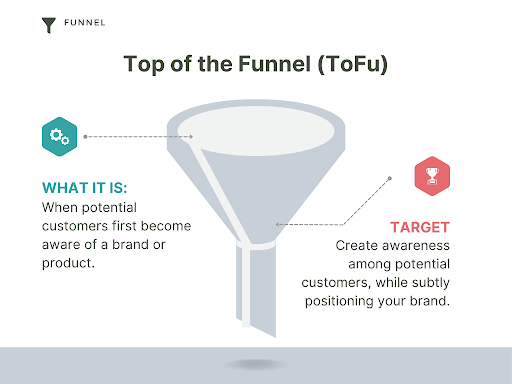
The Top-of-Funnel (TOFU) stage is the first step in capturing your audience’s attention. At this point, potential customers might not even know they have a problem or understand how your SaaS product can solve it. Your job is to create awareness while subtly positioning your brand as a thought leader in the space.
Use content marketing for high-quality, informative blogs, videos, and infographics. These things will help you address common pain points in your target industry.
For example, if you offer cloud-based collaboration tools, a blog post on "5 Ways Remote Teams Can Stay Productive" might resonate with your audience.
Search Engine Optimization (SEO) is your way to optimize your content with relevant keywords. It helps increase its visibility on search engines.
You can find high-volume and low-competition keywords through tools like Ahrefs, SEMrush, and Google Keyword Planner, which your audience frequently searches for. It should be mobile friendly-so it needs to create faster pages.
Social Media Campaigns will help you identify trends and solutions. LinkedIn is ideal for this purpose. You can post educational content, join conversations, and even target some ads to attract prospects in your ICP.
Tracking Metrics:
- Website Traffic: This measures the success of your awareness campaigns at pulling visitors to your site.
- Engagement Rates: Monitor how your audience interacts with content, such as likes, shares, and comments.
- Content Downloads: Tracking downloads (eBooks, guides) shows interest and allows for lead capturing through forms.
Middle-of-Funnel (MOFU):
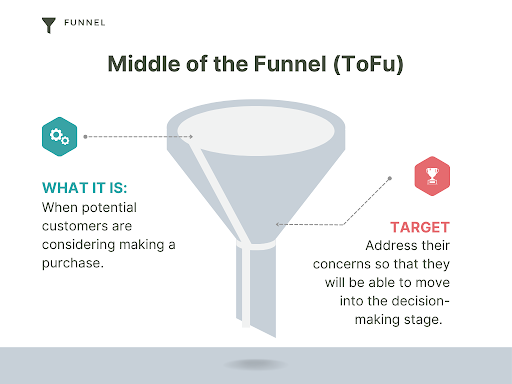
Your prospects are now comparing solutions at the Middle-of-Funnel and determining whether your SaaS offering meets their needs.
Aim to nurture these leads by providing personalized, incisive content that educates and builds trust with them. The more aptly you address their needs and questions, the more inclined they will be to move into a decision-making phase.
Send email streams that are personalized in which one gets to send content related to the interest or the activities performed by the prospect.
For example, after downloading a whitepaper by a lead on "Boosting Remote Team Productivity," send an email having a case study with some company that has similarities.
You could use tools like HubSpot or ActiveCampaign to segment your audiences and activate emails based on their behavior. Add testimonials, product highlights, and value-driven messaging to build credibility.
Host webinars and Events for your products. This is how you can find people who may be interested in your product and can watch how your solution works.
For example: The live demo of features, say related to their industry, helps understand exactly how your SaaS product stands out.
Encourage interaction by answering questions in real time and offering post-webinar follow-ups with personalized recommendations. You can partner with top industry influencers or experts to co-host events, lending additional credibility.
Next is having interactive content in your strategy. Use tools like ROI calculators, surveys, or quizzes to engage your target audience and make them interact to see the benefits they can acquire from you.
Example: A quiz labeled "How Much Can You Save Using [Your SaaS]?" offers prospects tailored intel. Interactive content encourages engagement and demonstrates that your brand gets the prospect's specific pain points.
Metrics to Measure:
- Marketing Qualified Leads (MQLs): Count the number of leads engaged with MOFU content (for example, attending webinars, and opening emails). If MQLs are rising, it means that your content hits a chord with your audience.
- Email Open and Click-Through Rates: High rates indicate that your emails are really grabbing attention and delivering value. Low rates may need to be tweaked on subject lines or content relevance.
- Webinar Registrations and Attendance: Strong attendance rates indicate interest and intent. Track how many attendees progress to requesting demos or sales calls.
Example:
Imagine a lead downloading your whitepaper on "Improving Customer Retention in SaaS." Follow up with an email inviting them to a webinar titled “Achieve 95% Retention Rates with [Your Product].”
During the webinar, highlight specific features that solve retention challenges, then send a personalized follow-up email offering a customized demo.
By using educational and interactive content, the MOFU stage bridges the gap between awareness and decision-making. This positions your SaaS solution as trusted, and relevant in the decision-making process of your prospect.
Bottom-of-Funnel (BOFU):
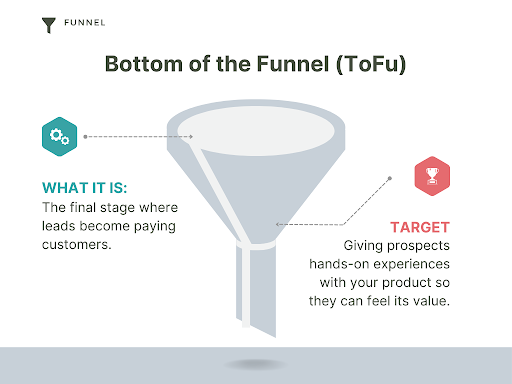
The bottom of the funnel is when customers are most likely to close their minds to purchasing or investing decisions. This stage would involve a final solution comparison with other options and an evaluation of their respective ROI. It would involve solving all your concerns finally and then persuading that customer about your product.
Design trials to emphasize the key features that solve their specific pain points. For instance, if your SaaS tool is optimized for team collaboration, set up a pre-configured workspace that shows the workflows specific to their industry.
Give proactive onboarding resources in the form of tutorials, webinars, and live Q&A sessions to reduce friction at the trial stage. Case studies show the actual value of your product through real-life success stories.
For example, a case study showing how your software improved a client's productivity by 40% can answer effectiveness questions. ROI calculators are personalized estimates of the monetary value your solution can bring. Show prospects how much they could save on labor costs or operational inefficiencies.
Finally, arm your salesforce with information from earlier in the funnel, like downloads and webinar attendance, so that they can personalize the discussion. Handle objections outright - like the one over the cost or difficulty in integrating with the solution - with flexible pricing options or assistance for integration.
Metrics to Monitor:
- SQLs: These are extremely interested prospects who are directly engaged with your sales team or have seriously demonstrated interest (such as by booking a demo).
- Conversion Rates: Track the proportion of prospects that convert from trial or demo to paid subscribers. A high conversion rate is a good indicator that sales and onboarding work well.
- Revenue Metrics: Tracks the average value a new customer brings so your efforts are working toward the revenue goal. Measures the total cost to achieve a new customer using CAC, including marketing and sales expenses so that you can determine your potential for profitability.
Example:
If free trial users cannot understand how to use your software, implement a guided onboarding process.
For example, include in-app walkthroughs, 24/7 chat support, or a dedicated success manager to answer questions in real time. These touchpoints reduce barriers to adoption and increase the likelihood of conversion.
Optimize Your B2B SaaS Funnel for Maximum Revenue:

A well-optimized B2B SaaS funnel turns leads into loyal customers and maximizes revenue.
To attain this, you must continually hone the funnel using data-driven tactics. Focus on metrics, experimentation, personalization, and automation to unlock your funnel's complete potential.
Track Key Metrics:
Track the right metrics at each stage of the funnel to ensure that efforts are translated into measurable outcomes. These metrics provide insights into what's working and highlight bottlenecks that require attention.
Top-of-Funnel (TOFU):
- Website Traffic: Monitor volume, sources, and bounce rates to assess awareness strategies.
- Engagement Metrics: Track social media impressions, click-through rates (CTR), and content downloads.
Middle-of-Funnel (MOFU):
- Marketing Qualified Leads (MQLs): Evaluate the quality and quantity of leads interacting with mid-funnel content, such as webinars or case studies.
- Email Metrics: Open rates and click-through rates are measures of how relevant your email campaigns are.
Bottom-of-Funnel (BOFU):
- Sales Qualified Leads (SQLs): Evaluate leads who are ready for sales engagement.
- Conversion Rates: Measure demo-to-deal or trial-to-subscription success.
You can track these metrics in real-time by using analytics tools like Google Analytics, HubSpot, or Mixpanel. Decisions will always be backed by data. Funnel optimization is a process that continues on and requires regular reviews to keep it aligned with revenue goals.
A/B Testing and Experimentation:
A/B testing is the foundation of a funnel optimization, allowing you to test hypotheses rather than assuming the outcome for a particular strategy. At every stage of a funnel, you can test elements of which one is likely to work best for your audience.
TOFU Experiments:
- Try different headlines, images, and CTAs on blog posts or ads to get higher engagement. For instance, try "Download Now" versus "Get Your Free Guide" to see which gets more clicks. Tools like Optimizely or Google Optimize can be used to set up experiments.
MOFU Experiments:
- Test the performance of subject lines, formats, and frequencies for email. Test webinar times or presentation styles to increase attendance and engagement.
BOFU Experiments:
- Compare free trial offers (7-day vs. 14-day) or demo formats (live vs. recorded). Test pricing page layouts or the positioning of testimonials and guarantees.
To be successful with A/B testing, one must track the correct metrics, ensure consistent sample sizes, and run experiments for long enough to have a statistically valid conclusion. Smaller changes - even something like CTA phrasing or email personalization - can dramatically impact revenue.
Read Also: What is A/B Testing? How to Use A/B Testing to Improve Your Marketing Campaigns?
Personalization:
Personalization is key to establishing trust and conversion within your B2B SaaS funnel. Tailoring communication experiences for your audience ensures that prospects will feel heard and valued.
TOFU Personalization:
- Serve dynamic ads with specific industries, company size, or roles in them. A social media ad for an HR software, for example, would say "Talent Acquisition Leaders at Growing Startups." Make the landing page align with messaging or pain points on their journey.
MOFU Personalization:
- Segment email lists by industry, engagement behavior, or stage in the funnel. For example, send detailed case studies to leads whose sectors can benefit from them. Use smart content tools like HubSpot Smart CTAs to display relevant offers or next steps based on previous actions.
BOFU Personalization:
- Use CRM insights to personalize follow-ups by sales reps. For instance, if a lead frequently engages with content about cost-saving, then focus your pitch on ROI during demos. Provide customized trial setups that are aligned with the lead's specific workflows or challenges.
Personalization throughout the funnel can improve engagement, reduce friction, and ultimately boost conversion rates as prospects feel more connected to your brand.
Automation:
Automation makes it more efficient with the management of your B2B SaaS funnel; it reduces the need for manual efforts to ensure consistency and timely communication. Your team can scale efforts while keeping it personalized.
TOFU Automation:
- Distribute relevant blog posts, eBooks, and newsletters using tools like Marketo or Mailchimp to prospects who have demonstrated interest. Set up automated lead scoring to qualify your top prospects by their behavior in websites visited or content downloads.
MOFU Automation:
- Send automatic email sequences after a webinar, such as key takeaways and a link to schedule a demo. Follow-up after a whitepaper download with additional resources and similar content. The next step of the funnel is using chatbots to answer FAQs or guides. Tools like Drift or Intercom can handle basic questions 24/7.
BOFU Automation:
- Automate free trial onboarding using in-app guides, video tutorials, and milestone reminders. Use example congratulatory emails that inform users of completion of the key setup step. In Salesforce, for example, you can use CRM to automate high-quality leads to assigned sales reps based on your specific criteria.
With automation in place for your funnel, you guarantee that no lead slips through, giving your team more time to focus on what matters.
What is the Future of B2B SaaS Marketing?
The B2B SaaS marketing landscape has been dynamically changing due to emerging technology and growing influence of digital platforms. Businesses are compelled to focus on up-to-date trends and digital-first attitudes among target audiences for competitive reasons.
Growing Trends and Technologies:
Artificial Intelligence (AI) and Machine Learning (ML):
AI has evolved B2B SaaS marketing by automating tasks, such as lead scoring and email personalization, which were previously accomplished manually. Machine learning tools track user behavior to determine buying intent and campaign optimization. For example, AI-based platforms like Drift increase customer interactions with intelligent chatbots.
Account-Based Marketing (ABM):
With advanced analytics and data enrichment, ABM strategies have become more accurate. Hyper-targeted campaigns using tools such as 6sense can enhance conversion rates for high-value accounts.
Voice Search Optimization:
As voice search increases, marketers have to optimize for natural language queries. The content you create should answer questions directly and be formatted for featured snippets.
Read Also: How is Voice Search transforming Digital Marketing?
Interactive and Immersive Content:
Augmented Reality and Virtual Reality experiences are becoming increasingly popular in B2B SaaS marketing. For instance, AR can provide virtual product demos that help showcase complex software features in an engaging manner.
Conclusion
The future of B2B SaaS marketing relies on flexibility in adapting to new technologies and being responsive to a digitally-focused audience, always keeping the customer at the center. These trends offer a more personalized, efficient, and transparent campaign, as they make use of tools like AI, machine learning, and blockchain. Account-based marketing, voice search optimization, and immersive content help businesses innovate and stay competitive.
The shift also creates the need for omnichannel engagement, data privacy compliance, and sustainable practices in digital-first strategies.
First-party data, video marketing, and mobile optimization will be the cornerstones of success in campaigns, guaranteeing relevance and trust in the rapidly changing landscape.
Marketers who continuously experiment and track key metrics will find a way to create successful customer experiences.
The future of B2B SaaS marketing is not about following trends, but using them strategically to build even stronger, more meaningful relationships with customers.
If you need any assistance regarding B2B services, feel free to connect with us at info@ontogendigital.com We also have many other blogs, so subscribe to us for more such informational blogs.
FAQ’s
1. What is a B2B SaaS marketing funnel?
A B2B SaaS marketing funnel is a framework that helps businesses guide potential customers through their journey, from discovering a product to making a purchase. By focusing on targeted content and personalized communication at each stage, businesses can increase conversion rates and customer loyalty.
2. How can businesses use SaaS marketing strategies to increase conversions?
By designing a well-structured customer journey with personalized content, offering trials, and providing case studies, businesses can address customer pain points, reduce decision anxiety, and encourage conversions.
3. Why is customer retention important in SaaS businesses?
Retention is crucial in SaaS because it ensures recurring revenue. Engaging customers post-purchase through onboarding, support, and regular check-ins helps reduce churn and foster long-term relationships.
Connect with us at info@ontogendigital.com for more updates as well as for our digital marketing services. We at Ontogen Digital provide each and every digital marketing service suited to your interests.
KEY TAKEAWAYS:
- SaaS businesses offer scalable software solutions through the cloud, reducing the need for installations and maintenance.
- The customer journey for SaaS includes awareness, consideration, decision, and post-purchase stages.
- A targeted approach at each stage of the journey can significantly improve conversion rates.
- Personalization and automation are essential for maximizing customer engagement and retention.
- Measuring key metrics and using tools like A/B testing helps optimize the funnel and improve revenue generation.